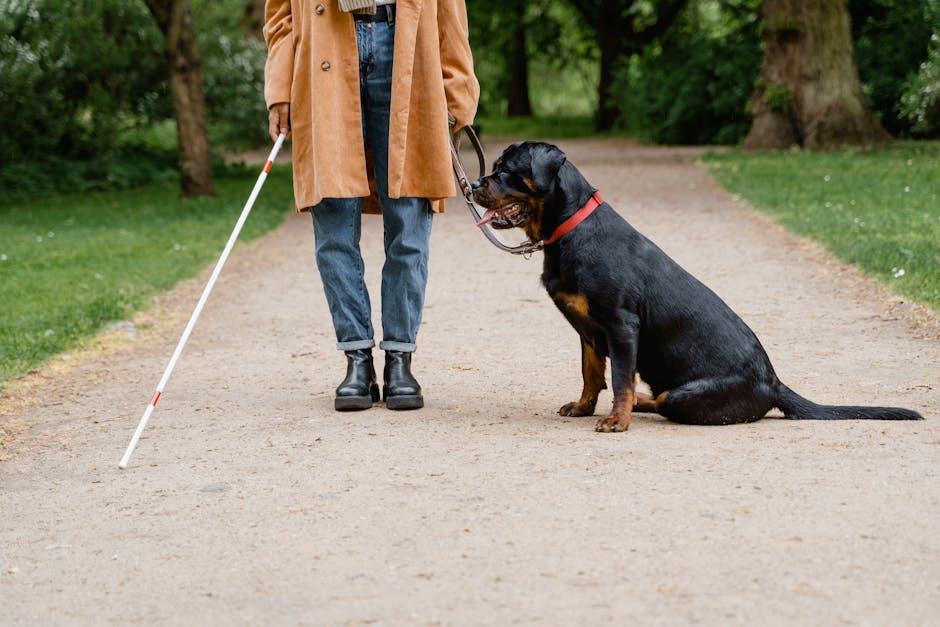Why Proper Training Matters
Training isn’t a luxury—it’s the baseline. For pets, it means understanding what’s expected. For owners, it means knowing how to guide without yelling or guessing. This kind of clarity builds confidence on both sides. A trained pet is safer around others, more predictable in public, and easier to care for when emergencies hit.
Then there’s the bond. Time spent training is time spent building trust. Eye contact, voice tones, body cues—these things create a shared language that lasts a lifetime. You’re not just drilling commands; you’re shaping a partnership.
Training also cuts off common issues before they snowball. Jumping on guests, barking at nothing, bathroom mistakes, chewing through shoes—most of it comes down to a lack of structure. Proper guidance gives your pet a job to do instead of letting instincts run wild. That’s not harsh, it’s fair—and pets thrive with clear boundaries.
Step 1: Understand Your Pet’s Mindset
Training works best when you know what makes your pet tick. Dogs, cats, and small animals don’t learn the same way, and treating them like they do usually leads to frustration—yours and theirs.
Dogs tend to thrive on structure and are generally eager to please. They pick up voice tone and routines quickly. With clear cues and rewards, they’ll connect the dots fast. Cats, on the other hand, are more independent thinkers. They’re curious, but not always cooperative. You need to make the behavior worth their while, usually by linking it with something they already like—like food, play, or that sweet sunlit windowsill. Small animals (think rabbits, guinea pigs, ferrets) are sensitive and prey-wired. Training them hinges on quiet consistency and a low-stress environment. Loud voices or sudden moves shut things down.
No matter the species, two things matter across the board: consistency and repetition. Mixed signals confuse animals. One day on the couch, the next day being scolded for it? That’s not training—it’s noise. Stick to simple boundaries and repeat cues often. Build routines your pet can count on.
Finally, learn how your pet says, “I’m overwhelmed” or “I don’t get it yet.” Stiff tails, pinned ears, turning away, freezing up—these are stress signals. Pushing through them usually backfires. Instead, back off, reset, and try again later. Reading body language helps you meet your animal where they are, instead of where you wish they were.
Training starts with listening, not commanding. That’s how real progress begins.
Step 2: Start With the Basics
Before you teach advanced tricks or solve complex behavior issues, every pet needs to master the fundamentals. A solid foundation in basic obedience and routine is key to building confidence and reducing stress—for both pet and owner.
House Training Essentials: Timing, Routine, and Reward
Housebreaking your pet takes consistency and patience, but it’s highly achievable with the right approach:
- Timing is critical: Take your pet to their designated potty spot immediately after waking, eating, playing, or drinking.
- Establish a routine: Go out at the same times daily. Predictability helps animals learn faster.
- Reward success: Always praise and offer a treat immediately after your pet eliminates in the right place. Delayed rewards confuse the connection.
- Avoid punishment: If accidents happen indoors, clean thoroughly and move on—never scold after the fact.
Name Recognition and Recall Techniques
Teaching your pet to respond to their name and come when called can prevent accidents and create safer experiences outdoors.
- Make the name positive: Say your pet’s name in a happy tone and reward them when they make eye contact or approach.
- Use recall games: Start in low-distraction areas. One person calls, the other rewards. Swap roles.
- Be generous with rewards: Use high-value treats or favorite toys when teaching a recall.
- Never call to punish: Keep the recall command associated only with good outcomes.
Proper Leash Walking: No Pulling, No Stress
A pleasant walk is a goal for every pet owner, but it begins with training—not just clipping a leash on.
- Start indoors: Let your pet get used to the leash without distractions.
- Use short sessions: Keep walks manageable and focused at first.
- Practice ‘stop-and-go’: Each time your pet pulls ahead, stop walking. When the leash slackens and they return, move forward again.
- Consider harnesses: For pets prone to pulling, a front-clip harness can reduce strain and help communication.
Building early obedience not only helps navigate daily life—it also sets the tone for trust and connection that makes future training easier and more effective.
Step 3: Use Positive Reinforcement
Positive reinforcement isn’t just the feel-good method—it’s the one that works. At its core, reward-based training means encouraging the behaviors you want by offering something your pet values. This could be a high-value treat, a favorite toy, or good old-fashioned affection. You teach your pet to associate doing the right thing with getting something they like. Simple, repeatable, effective.
Punishment-based methods, on the other hand, can create confusion or fear. Yelling, leash jerks, or spray bottles might stop a behavior in the moment—sometimes—but they rarely address the cause. Worse, they can fray trust. Training works best when your pet sees you as a clear, predictable guide—not a source of random corrections.
When using treats or toys, timing is everything. The reward should come within seconds of the desired action, or the message gets lost. Use smaller treats during sessions to avoid overfeeding, and taper off once a behavior becomes routine. Praise matters too, especially when it’s consistent in tone and easy to pair with physical affection.
One common mistake? Accidentally reinforcing unwanted behavior. Giving attention when your dog jumps, for example, might feel like you’re scolding—but to them, attention is a reward. Another misstep is correcting without clarity. If you’re vague or late with your response, your pet won’t connect the dots, and you’ll both end up frustrated.
Stick to what works long-term: clarity, rewards that motivate, and a tone your pet can read. They don’t need a drill sergeant. They need a leader who speaks their language.
Step 4: Addressing Common Issues
Some behaviors feel like “just what pets do,” but most come down to misdirected energy or unmet needs. Barking, scratching, and chewing aren’t random—they’re messages. Dogs bark because they’re anxious or understimulated. Cats scratch to mark territory and stretch. Chewing, especially in young dogs, is often boredom-based or due to teething. The best fix? Give that energy somewhere productive to go. Long walks, puzzle toys, structured play—they’re not extras, they’re essentials.
Separation anxiety is tougher. Signs include destructive behavior, howling when alone, or even going to the bathroom indoors out of stress. Address it slowly. Start by leaving the room for short stretches without drama. No big hellos or goodbyes. Build alone-time tolerance like you would muscle—gradually, with repetition and calm energy. Some pets benefit from background noise, interactive feeders, or behaviorist support if things escalate.
Crate training gets a bad rap, but when done right, it taps into a dog’s den instinct. The crate should never be a punishment zone. Think cozy, not confined. Start with short, positive intervals—treats, toys, and rest—and always leave the door open at first. It’s a tool for safety and comfort, especially when traveling or house training.
Then there’s socialization—which really just means helping your pet get comfortable with unfamiliar people, pets, and places without panic. Start early if you can. Go slow, keep it positive, and watch your pet’s body language. Forced interactions backfire. Focus on short, quality exposures and let curious sniffing lead the way. Whether it’s a neighborhood dog, the mail carrier, or a busy park, social growth takes reps—and your patience.
Step 5: Keep It Consistent
Training isn’t about one big breakthrough—it’s about showing up every day. Short, focused sessions work best: 10 to 15 minutes, once or twice a day, depending on the pet’s age and attention span. Pick a quiet space, eliminate distractions, and repeat the basics until they stick. Think of it less like cramming for a test and more like building muscle memory—slow, steady, repeat.
Patience isn’t optional here—it’s everything. Your pet isn’t trying to frustrate you; they’re figuring it out in their own time. Getting visibly angry or inconsistent only sets you both back. Stay calm, be clear, and keep rewards immediate and meaningful. It’s not flashy, but it works.
Track progress week by week. Week one? Maybe it’s just sitting on command. By week two, you might get a solid recall. Once a routine builds, things snowball—in a good way. Small wins stack up, but they only happen if you stay the course. Progress isn’t linear, but it is real. Stick with it, and you’ll see it.
Advanced Tips for Going Beyond the Basics
Once your pet masters the usual suspects—sit, stay, come—it’s time to level up. Teaching cues beyond the basics keeps your animal mentally sharp and deepens your communication. Try practical cues like “touch” (where your pet taps their nose to your hand), “place” (move to and stay in a specific spot), or even “find it” for scent games. These aren’t just party tricks—they build focus and reduce frustration.
Next up: enrichment. Your pet’s brain needs exercise too. Hide treats around the house and turn snack time into a scavenger hunt. Puzzle feeders, snuffle mats, or interactive toys give pets a challenge that burns off restlessness. If you’ve got the space and time, basic agility setups—think tunnels, ramps, or hoops—are great for confidence and coordination.
And don’t count out older animals. Senior pets can absolutely learn new things. In fact, mental stimulation is great for aging minds. Just keep sessions short and be patient—lower energy doesn’t mean lower intelligence. With the right approach, older pets can master new tricks and feel proud doing it.
Creating a Supportive Environment
A pet’s behavior doesn’t exist in a vacuum. The home they live in influences everything—from how safe they feel to how they respond to training. When pets act out, it’s often a sign something in their environment isn’t working. Noise, crowding, lack of stimulation, or even unpredictable routines can trigger stress and lead to problem behaviors.
Space matters. That doesn’t mean you need a mansion—it means your pet should have a designated spot that’s theirs. A corner with a bed, some toys, and distance from chaos can make a huge difference. Cats need vertical space and hiding zones. Dogs benefit from quiet areas where they can retreat. Small animals like rabbits or hamsters thrive when their enclosures mimic natural settings.
Comfort isn’t a luxury—it’s a baseline. Proper bedding, the right temperature, and a clean setup shape how your pet rests, recovers, and reacts. Safety is non-negotiable. That means securing trash, managing cables, and removing plants or items that could harm curious paws and mouths.
When pets feel secure, they behave better. Training becomes easier. Bad habits lose their grip. Everything improves—from their mood to your bond.
Want to upgrade your pet’s space and reduce stress behaviors? Start here: Creating a Pet-Friendly Home: Tips and Tricks.
Final Thoughts
Training a pet isn’t a straight path—and that’s okay. One day they nail a new cue, the next day it feels like you’re starting from scratch. This isn’t failure; it’s part of the process. Setbacks happen. Progress comes in inches, not leaps.
Remember: your pet isn’t on anyone else’s timeline. Some pick things up fast. Others need more time, more repetition, more clarity. Comparing your pet to a training video or your neighbor’s dog won’t help either of you. Learn your pet’s rhythm and meet them there.
And here’s the real game-changer: your mindset. Frustration, rushing, and mixed signals confuse your animal. Steady leadership—clear cues, a calm tone, and consistent responses—keeps things moving forward. You’re not just teaching behaviors. You’re building trust.
Keep showing up. Stay steady. That’s what makes the difference.




